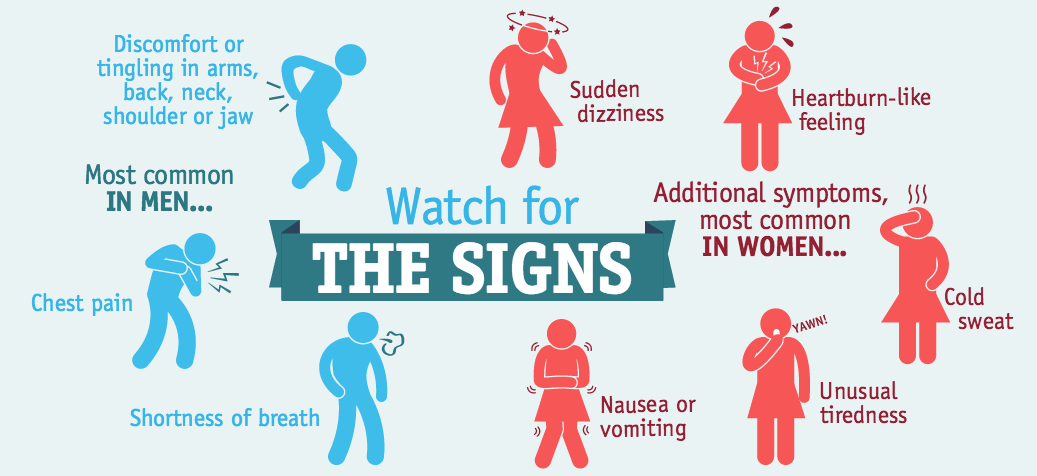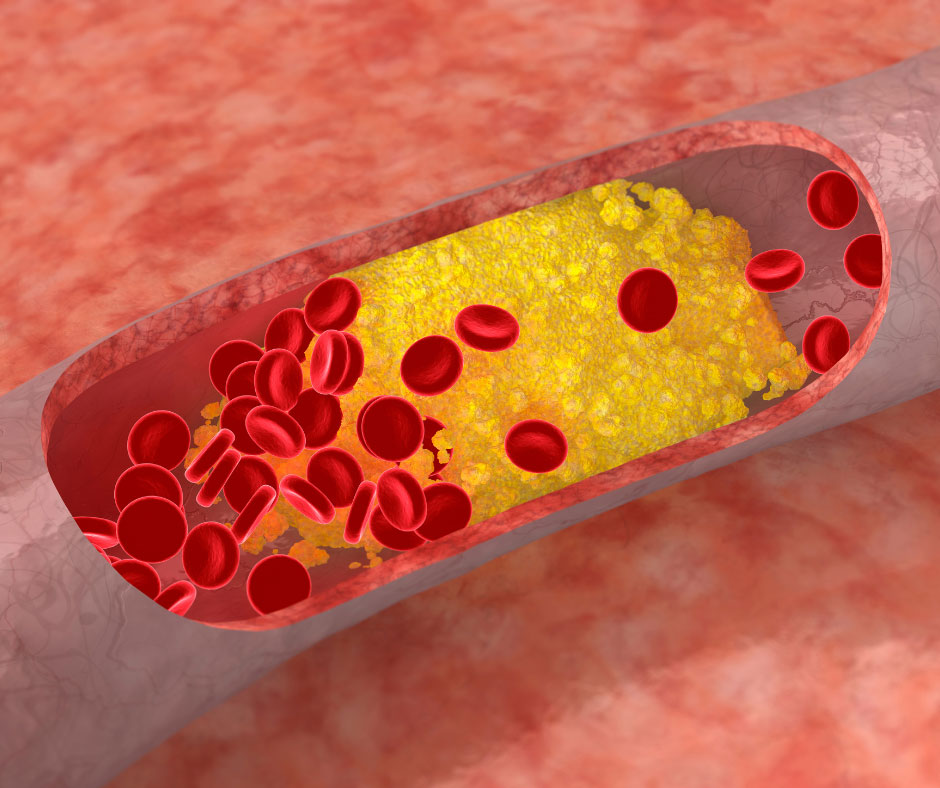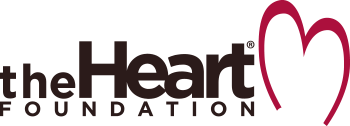A heart attack occurs when heart disease has reached the point that blood flow to the heart is blocked. Sudden cardiac arrest is when the heart malfunctions and suddenly stops beating unexpectedly. A heart attack is a “circulation” problem and sudden cardiac arrest is an “electrical” problem. In a heart attack if the blocked artery is not reopened quickly, the part of the heart normally nourished by that artery begins to die. The longer a person goes without treatment, the greater the damage. Symptoms of a heart attack may be immediate and intense. More often, though, symptoms start slowly and persist for hours, days or weeks before a heart attack. Heart disease is most often the cause of a heart attack.
SIGNS OF HEART DISEASE
Heart and blood vessel disease — also called heart disease — includes numerous problems, many of which are related to a process called atherosclerosis. Atherosclerosis is a condition that develops when a substance called plaque builds up in the walls of the arteries. This buildup narrows the arteries, making it harder for blood to flow through. If a blood clot forms, it can stop the blood flow. This can cause a heart attack or stroke. The first sign of heart disease is often a heart attack or other serious event. But, there are a few important signs that can help you recognize problems before they come to a head.
Heart disease that involves your blood vessels is often signaled by:
1. Chest pain (angina) – a sense of discomfort or squeezing in your chest that lasts for 30 minutes to a few hours.
2. Shortness of breath – experience difficulty catching your breath after moderate physical exertion, like walking up a flight of stairs.
3. Unexplained pain in your upper torso, neck, and jaw and changes in your extremities, such as pain, swelling, tingling, numbness, coldness, and weakness.
4. Extreme fatigue
5. Irregular heartbeat that is faster or slower than usual
6. Dizziness or fainting
Heart disease is the No. 1 cause of death among adults of both sexes in the United States. But, between men and women, the risks, the symptoms and even the disease may be different.
MEN
Heart disease is one of the leading health risks facing men today. Many men are at high risk for developing heart disease. Only a quarter of the men in the US meet the federal guidelines for physical activity. As of 2015, approximately 34% of American men are obese. And about 20 percent of men smoke, which can cause the blood vessels to narrow. Narrowed blood vessels are a precursor to certain types of heart disease. Other risk factors include a diet high in saturated fat, alcohol abuse or excessive drinking, high cholesterol, diabetes and high blood pressure (hypertension).
Heart Attack Signs in Men:
1. Chest discomfort. Most heart attacks involve discomfort in the center of the chest that lasts more than a few minutes, or that goes away and comes back. It can feel like uncomfortable pressure, squeezing, fullness or pain.
2. It used to be thought that only chest pain was a sign of heart attack, but it’s possible to have discomfort that doesn’t register as painful. Symptoms can include pain or discomfort in one or both arms, the back, neck, jaw or stomach.
3. Shortness of breath with or without chest discomfort.
4. Other signs may include breaking out in a cold sweat, nausea or feeling lightheaded.
Don’t wait to get help if you experience any of these heart attack warning signs. Although some heart attacks are sudden and intense, most start slowly, with mild pain or discomfort. Pay attention to your body — and call 911.
WOMEN
Most of what we know about diagnosis and treatment of heart disease comes from research done on middle-aged men. However, the disease is different in women. Women with heart disease may have different symptoms than men and tend to have heart attacks later in life. Symptoms of heart disease in women might be attributed to existing conditions, like arthritis or diabetes. Such problems as high blood pressure, high cholesterol and diabetes may make surgery a riskier proposition for them.
Heart Attack Signs in Women
1. As with men, women’s most common heart attack symptom is chest pain or an uncomfortable pressure, squeezing, fullness or pain in the center of your chest. It lasts more than a few minutes, or goes away and comes back.
2. Pain or discomfort in one or both arms, the back, neck, jaw or stomach.
3. Shortness of breath with or without chest discomfort.
4. Other common symptoms in women include breaking out in a cold sweat, nausea/vomiting, or feeling lightheaded, palpitations; sleep disturbances and unexplained fatigue.
Don’t wait to get help if you experience any of these heart attack warning signs. Although some heart attacks are sudden and intense, most start slowly, with mild pain or discomfort. Pay attention to your body — and call 911.
HEART DISEASE IS PREVENTABLE
1. Schedule an appointment with your healthcare provider to learn your personal risk for heart disease. Know your numbers – your blood pressure, cholesterol, and body fat index.
2. Quit smoking. Did you know that just one year after you quit, you’ll cut your risk of coronary heart disease by 50 percent?
3. Start an exercise program. Just walking 30 minutes a day can lower your risk for heart attack and stroke.
4. Eat a heart healthy diet. Eat more fruits, vegetables and whole grains, eat lean protein rich foods, such as fish or skinless chicken, avoid saturated and trans fats, found in red meat, butter and processed foods, and reduce your salt and sugar intake.
5. Learn to cope with stress










